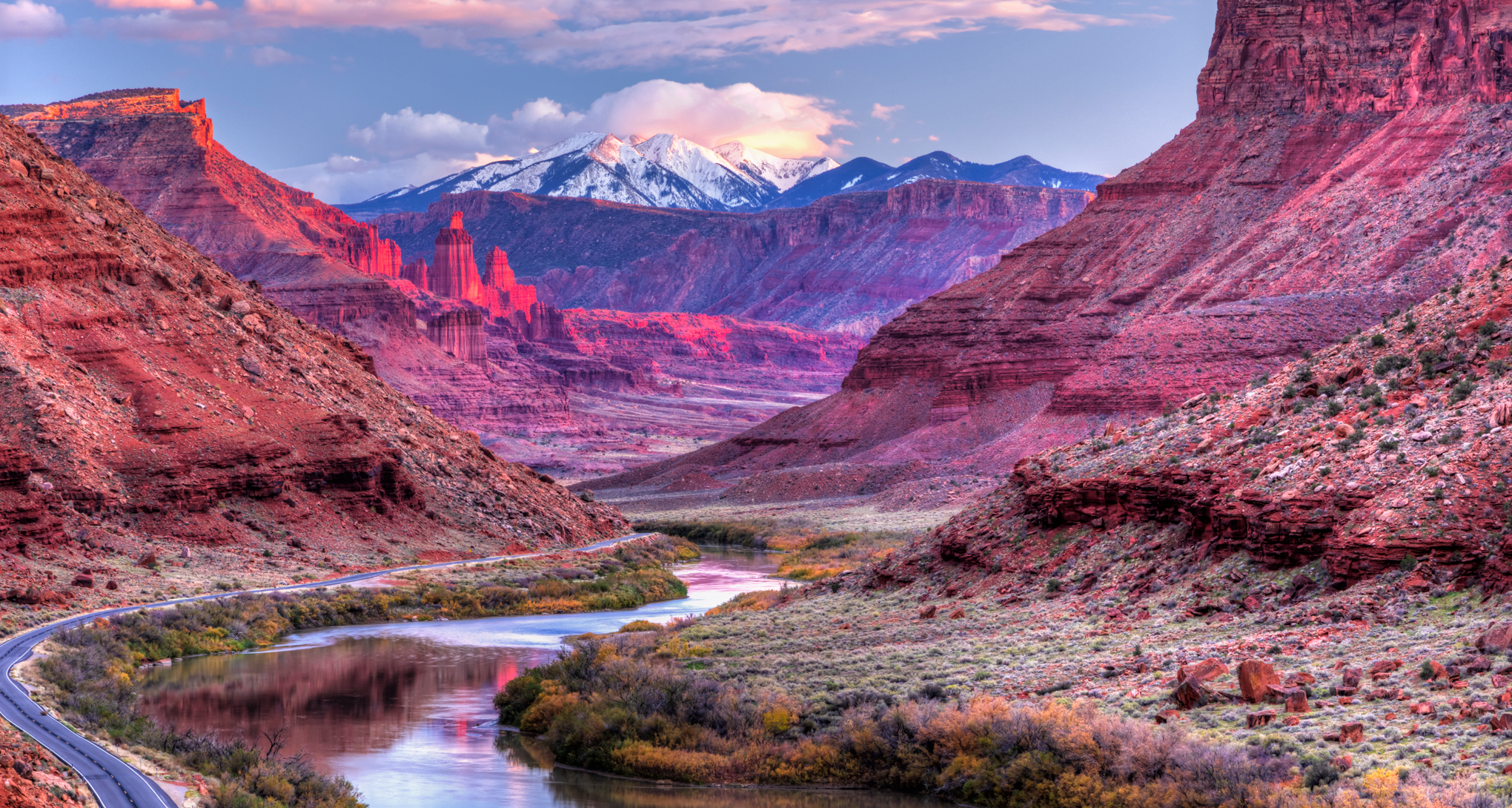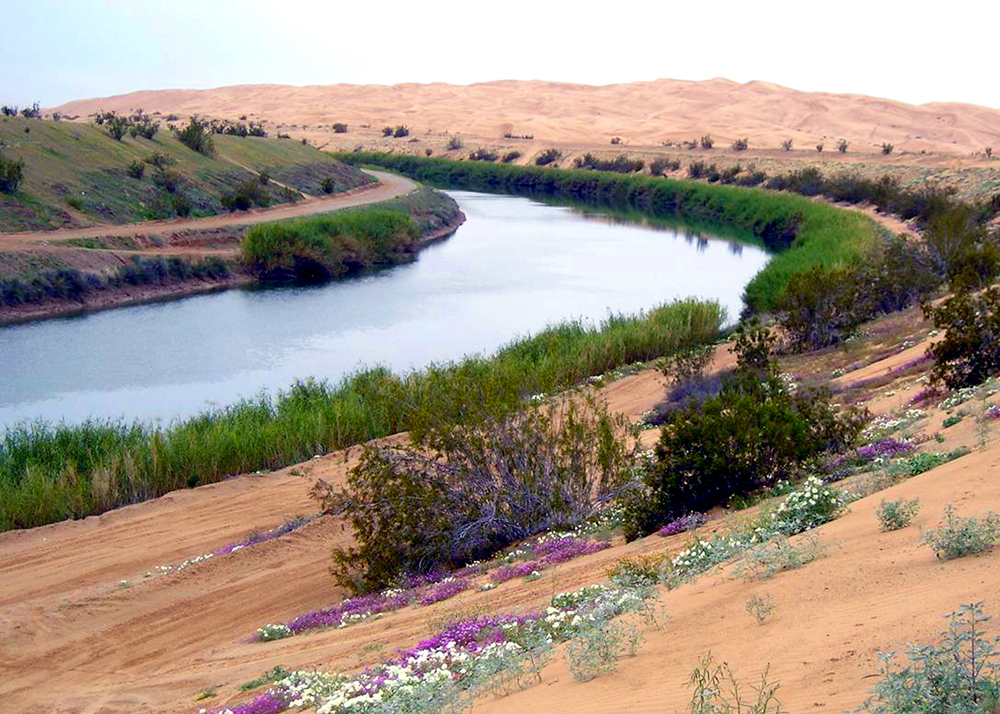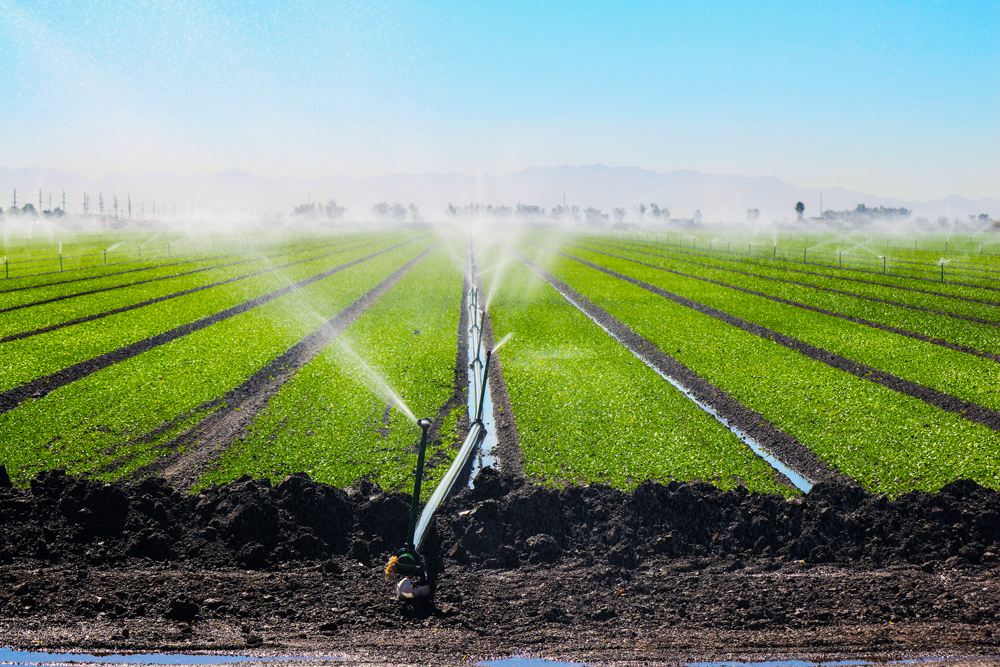
BRINGING WATER CERTAINTY TO THE 40 MILLION AMERICANS WHO RELY ON THE COLORADO RIVER AS A WATER SOURCE HAS BEEN A CONTENTIOUS PROCESS, BUT THERE IS REASON FOR OPTIMISM
“Change is coming to the Colorado River and because it is, I can’t emphasize enough how much the post-2026 negotiations matter,” said Becky Mitchell in a speech at the 2024 Colorado Water Congress’s Annual Convention in Aurora, Colorado. “Whether you are in the Upper Basin, Lower Basin, Mexico, or a member of one of the 30 Tribal Nations, we all deserve a future with certainty and security in our water supply, without that being jeopardized by constant crisis management.”
In her role as the state of Colorado’s Commissioner to the Upper Colorado River Commision, she works with fellow commissioners from New Mexico, Utah and Wyoming to develop solutions to protect the 1,450-mile Colorado River, which snakes through multiple states on its way from the United States into Mexico.
When it comes to the Colorado River, a source of water for as many as 40 million Americans, as well as critical hydroelectric power at both Hoover Dam and Glen Canyon, is at stake.
With some intensity in the last year, the U.S. government has worked with seven states, 30 Tribal nations, and the country of Mexico to stabilize the Colorado River Basin. But rules that have been in place since 2003 are about to expire, and with their sunset, there is a growing concern that each municipality might be left to fight for its own share without federal resources to finance innovation, or in some cases, fallowing of land.
According to the U.S. Bureau of Reclamation (US BoR), drought conditions, exacerbated by climate change and global warming, have diminished the key lakes Mead and Powell, negatively impacting air and water quality as well as aquatic habitats. As water recedes, the exposed beds are generating additional airborne dust. The salinity of the water has also been on a quick rise. The Public Policy Institute of California (PPIC) dates this water deficit back at least to 1999, accelerated by heavy development from residential and agricultural use. Some good news emerged at the end of 2023, when California’s Imperial Irrigation District (IID), one of the largest consumers of Colorado River water, endorsed a plan sponsored by the US BoR to conserve as much as 3 million acre-feet of water by 2026.
In a prepared statement, Wade Crowfoot, secretary of the California Natural Resources Agency, said that in late 2022, “the Colorado River system was facing near-term collapse. Today, the system is stabilized for coming years thanks to IID and other water agencies across California and the Southwest stepping up to conserve water.”


The Imperial Irrigation District’s All-American Canal as it moves through the sand dunes west of Yuma, Arizona.

California Natural Resources Agency Secretary Wade Crowfoot.
To accomplish its share of conservation, IID has implemented an On-Farm Efficiency Conservation Program, which includes familiar solutions such as sprinklers, drip systems, and field reconfiguration along with other emerging technologies. Precision land-leveling uses laser and GPS technology to smooth agriculture land out to at or near zero grade, resulting in a massively higher return on crop productivity while utilizing far less water. Tailwater return systems captures run-off from one set of fields for use in irrigating others. “Our job is to work with everyone,” says IID Public Information Officer Robert Schettler. “We have more water than some of the states do, but [the Colorado River is our] only source … it’s our lifeblood.” In describing further attempts to implement new technologies such as hanging sprinklers, Schettler makes reference to the substantial funding attached to the Federal Inflation Reduction Act intended to aid conservation, including more than $10 million in metering installation in a variety of municipalities, canal lining, turf replacement, or irrigation improvements, and $250 million designated for restoration of the Salton Sea.
At least four agencies, including the Metropolitan Water District of Southern California, the Imperial Irrigation District, the Coachella Valley Water District and the Palo Verde Irrigation District, say they need this funding, and additional efforts from the federal government for the Salton Sea, in order to sign on to these voluntary commitments to reduce water usage. Schettler points to the local agriculture, where growers have in the past been compensated for fallowing land, though he is quick to point out that taking land out of production is a last resort in conservation. “Growers grow to market,” he says, and that they need to be incentivized to invest in innovation and upgrades.

An irrigation canal in Imperial Valley, California.

Sprinkler irrigation is one of the popular on-farm water efficiency conservations Imperial Valley farmers continue to
implement. In 2023, 100,000 acre-feet of water created by
Imperial Valley on-farm conservation measures went to boost the elevation of Lake Mead.

An overview of the IID’s dams.
As many as 19 agreements in Arizona and California are now in place, but there is real concern that an uncertain political climate could undo some of this progress. “I think the real win is that we’ve gone from conflict to consensus in a few short months — and conflict between the states is a recipe for failure,” Crowfoot told the Los Angeles Times in May 2023, in an article that framed the choices for the states as cooperation, litigation, or leaving their fate in the hands of the federal government. “Our collective ability to come together and identify a shared approach, a consensus approach, is truly a win for California and also the other states,” Crowfoot said.
A spokesperson for the California Natural Resources Agency went on to elaborate that, “the reality is that water in the west can be contentious and any time you have a range of perspectives coming to the table to collaborate on a path forward, there will be different opinions, priorities and perspectives. In California, we’re working to find and propose sustainable solutions for the future.”
In a Colorado Sun editorial Mitchell writes, “There will be years of high flow, and years of low flow, but there will also be variability in the timing. We have to be able to adapt to whatever Mother Nature provides, and when she provides it. We need a basin-wide commitment to managing the river in response to the changing hydrology. In years with bad snowpack, we live within the means of the river. In a year with a bountiful snowpack, we make smart choices about finding the balance of sharing the resource or preserving it for a dry year. We need to be flexible.”
Schettler puts it succinctly. “If we don’t work together, chances are we end up in court.”

Matt Chapuran
Last modified: June 12, 2024
